Passing by PowerShell and third-party tools with a graphical user interface, you can configure an SFTP server in Windows. Discover with us these two steps and the prerequisites to follow to use SFTP.
SFTP Server on Windows: What Do You Need?¶
Do you want to configure a secure FTP server? You need to know the difference between FTP and SFTP. With the SFTP protocol, data is sent encrypted, and not in plain text, as is the case with FTP. You must therefore use a Secure Shell (SSH), to establish a secure channel for the transfer of your data. The latter is provided by an open source tool, OpenSSH.
To connect to the SFTP server, it is necessary to install an SFTP client. For this, we advise you, for example, to use FileZilla, which offers a drag-and-drop file manager and allows transfer of up to four gigabytes. Furthermore, your system memory must be sufficient to transfer the desired volume of data. Verify that you have the following system requirements for Windows:
- Processor (CPU) : 1.6 GHz minimum (dual core)
- RAM : 4GB
- Hard disk space : variable depending on the volume of data
- Operating system : Windows
- Software : OpenSSH, SFTP client
- Internet connection : sufficient for data transfer
With a secure FTP server offered by IONOS, access a fast and secure solution for hosting your files with SFTP or FTPS.
Step-by-step instructions: configure an SFTP server on Windows¶
To install an SFTP server on Windows, download OpenSSH and open the corresponding SSH port so that the SFTP server and client can communicate with each other.
Step 1: Install OpenSSH¶
Download the most recent OpenSSH version. To do this, go to Github, for example. Then open PowerShell using a right-click and select “ Execute as administrator “. Navigate to the OpenSSH folder:
cd "C: \Program Files\OpenSSH"bash
The “dir” command then allows you to list the files in the directory.
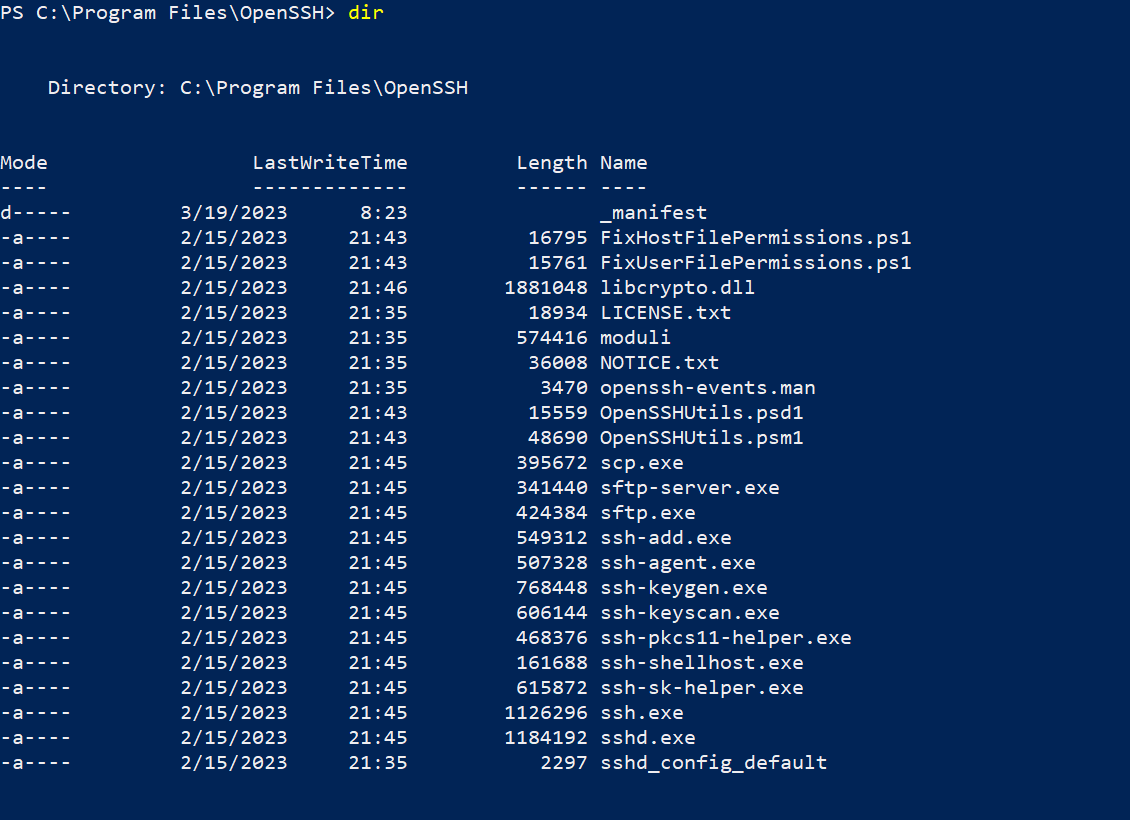
Step 2: Enable SSHD and SSH Agent¶
A single command is enough to install both the daemon and the SSH agent.
powershell.exe -ExecutionPolicy Bypass -File install-sshd.ps1bash
Once the installation is complete, all you have to do is close PowerShell.
You can manually launch the SSH daemon, or choose to enable it on every reboot. Go to “ Services.msc » if you want to configure autostart.
Step 3: Open the SSH Port¶
By default, SSH uses port 22. It is normally closed, as SSH is not preinstalled in Windows. However, you can open it manually from Windows Firewall. Open Windows Defender Firewall; on the right of the interface, set a “ new rule » for incoming rules.
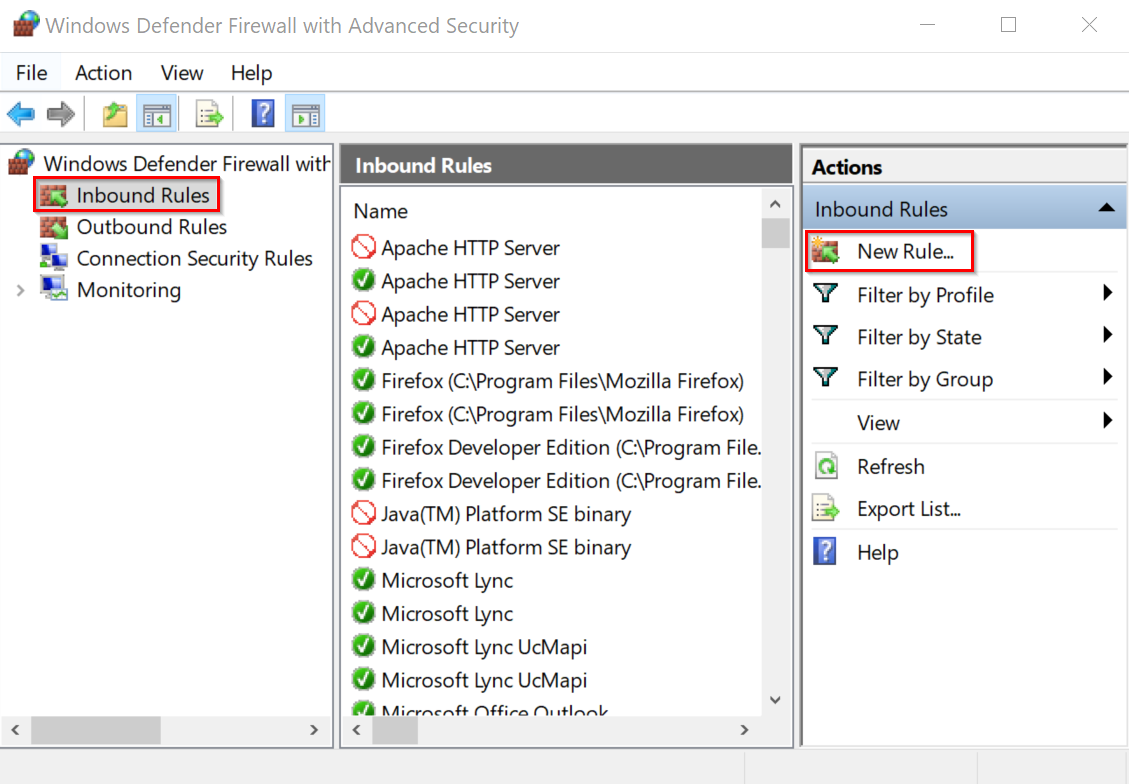
In the next window, choose “ Port ”, then click on “ Following “.
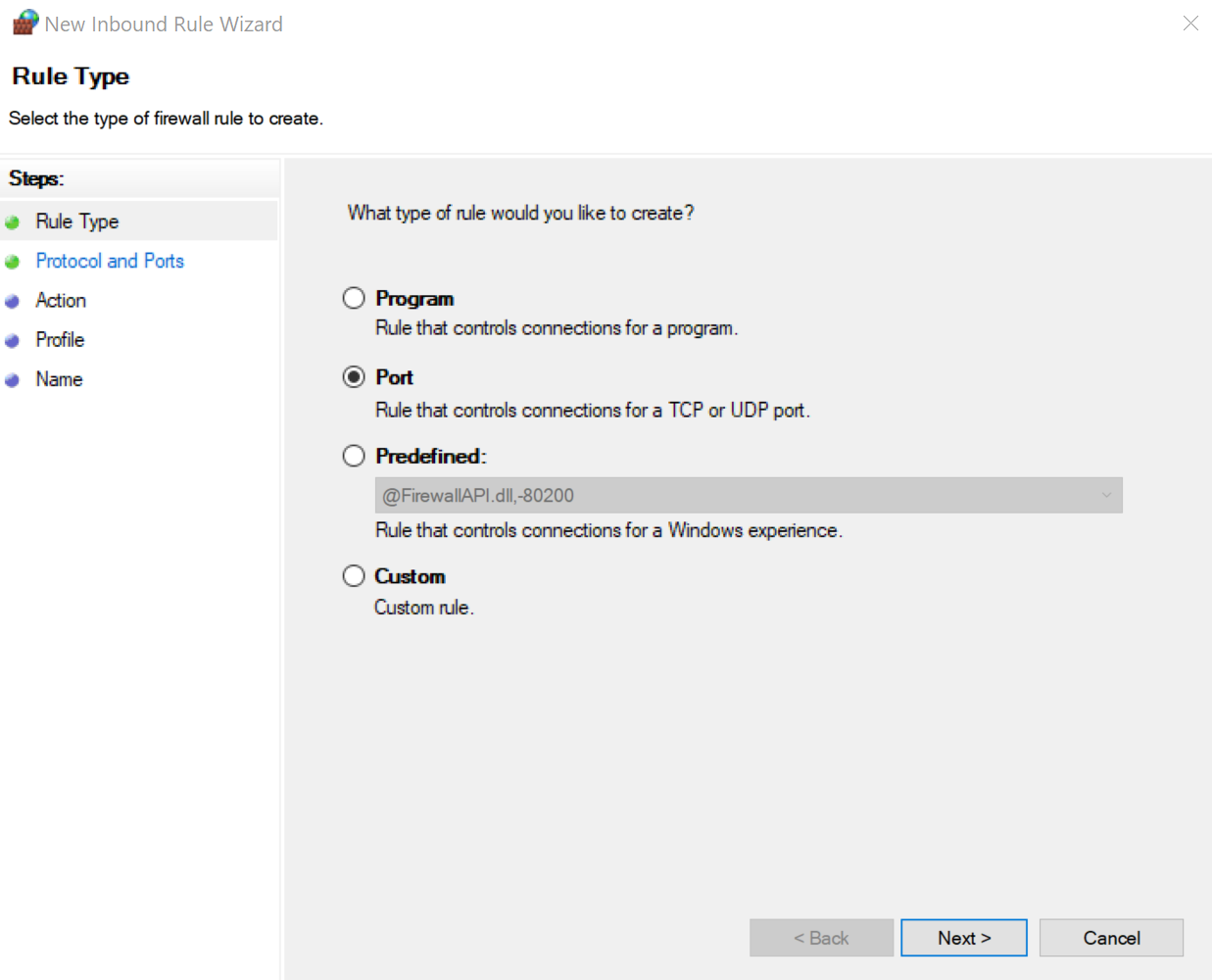
Enable the protocol “ TCP » and set “ 22 » for the port.
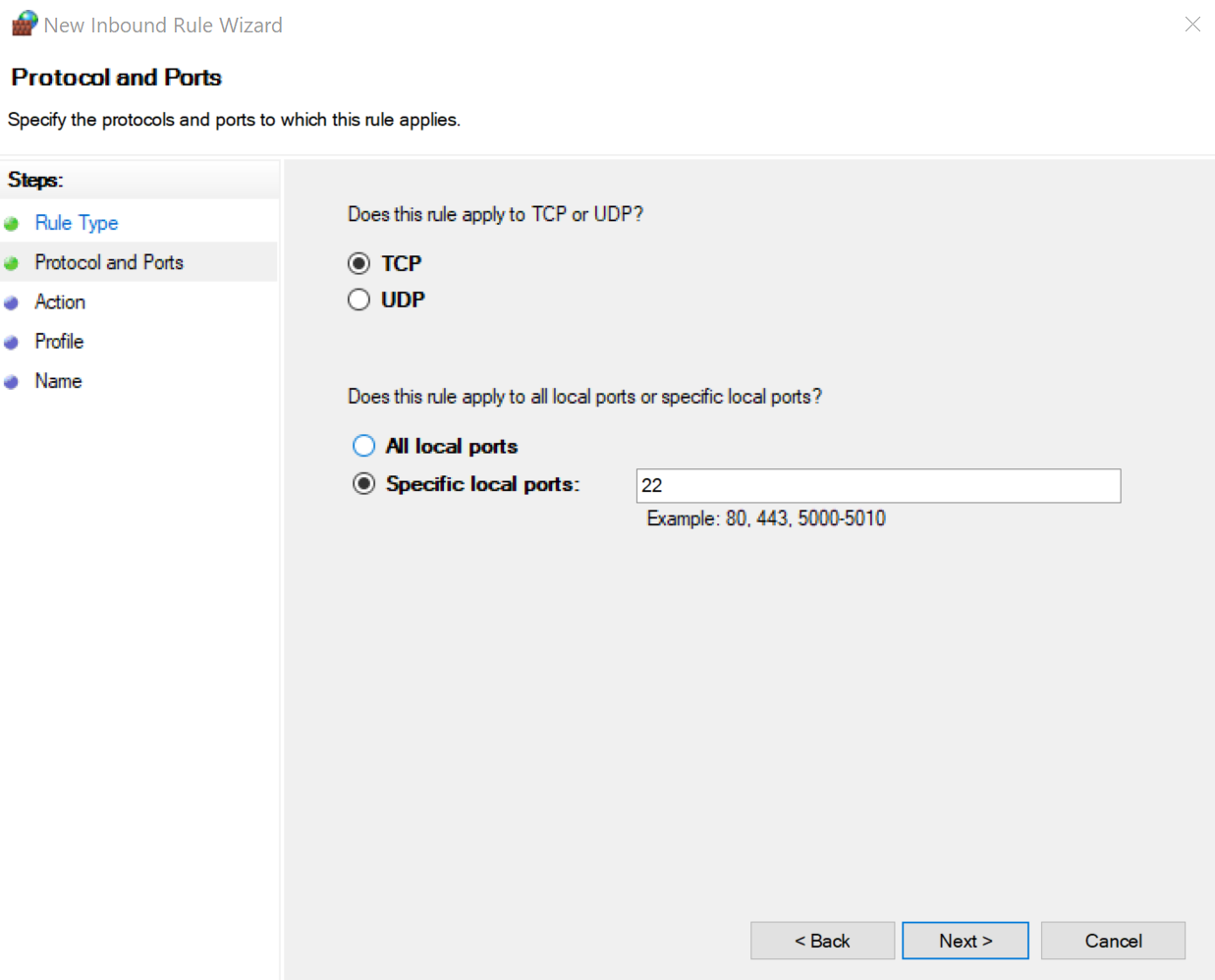
In the next window, hold the selection on Connection. Below ” Profile ”, only check the box “ Private “.
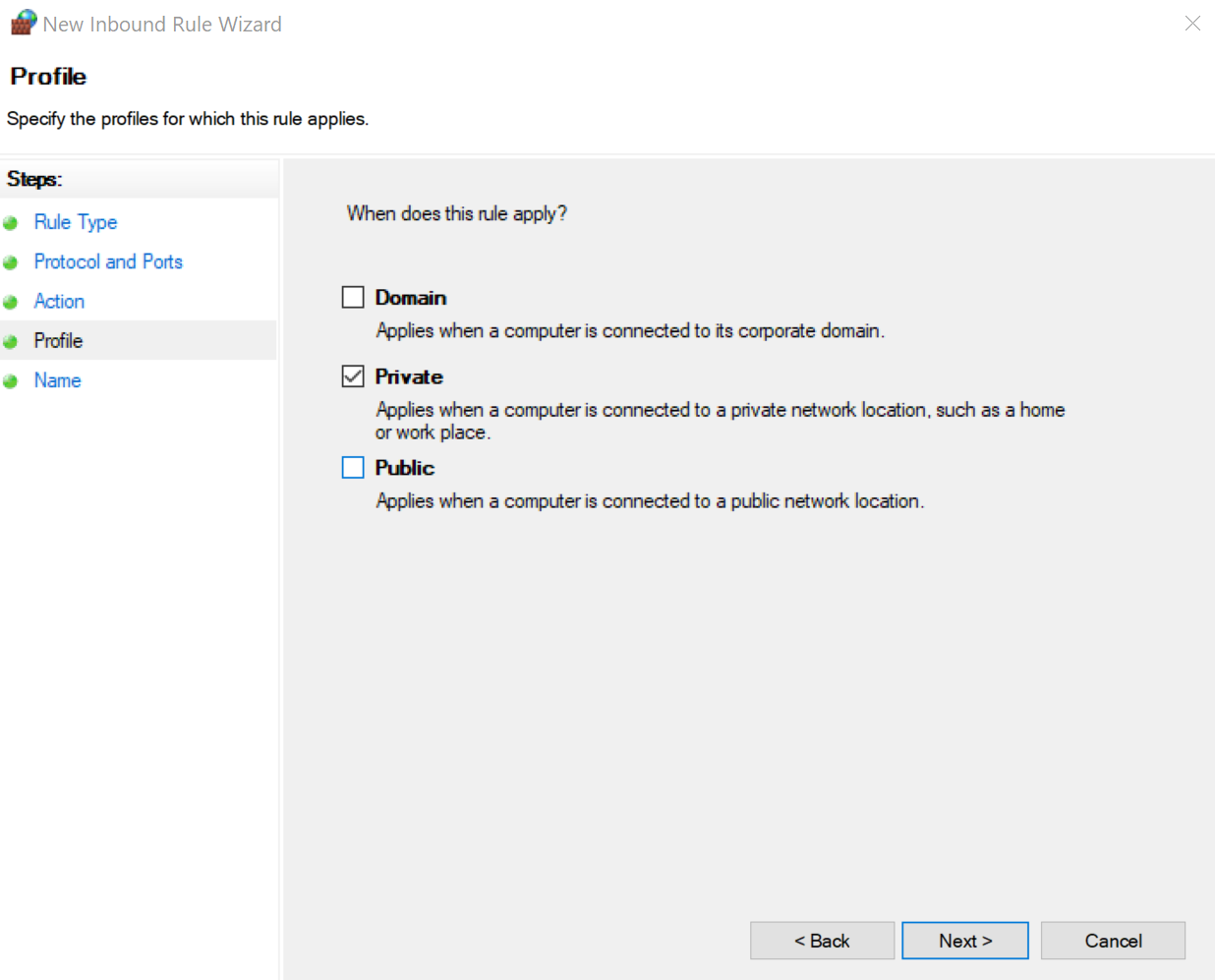
All you have to do is give a name to the new rule. In our example, the rule is called “ OpenSSH » ; its description is optional. Finally, close the port configuration window.
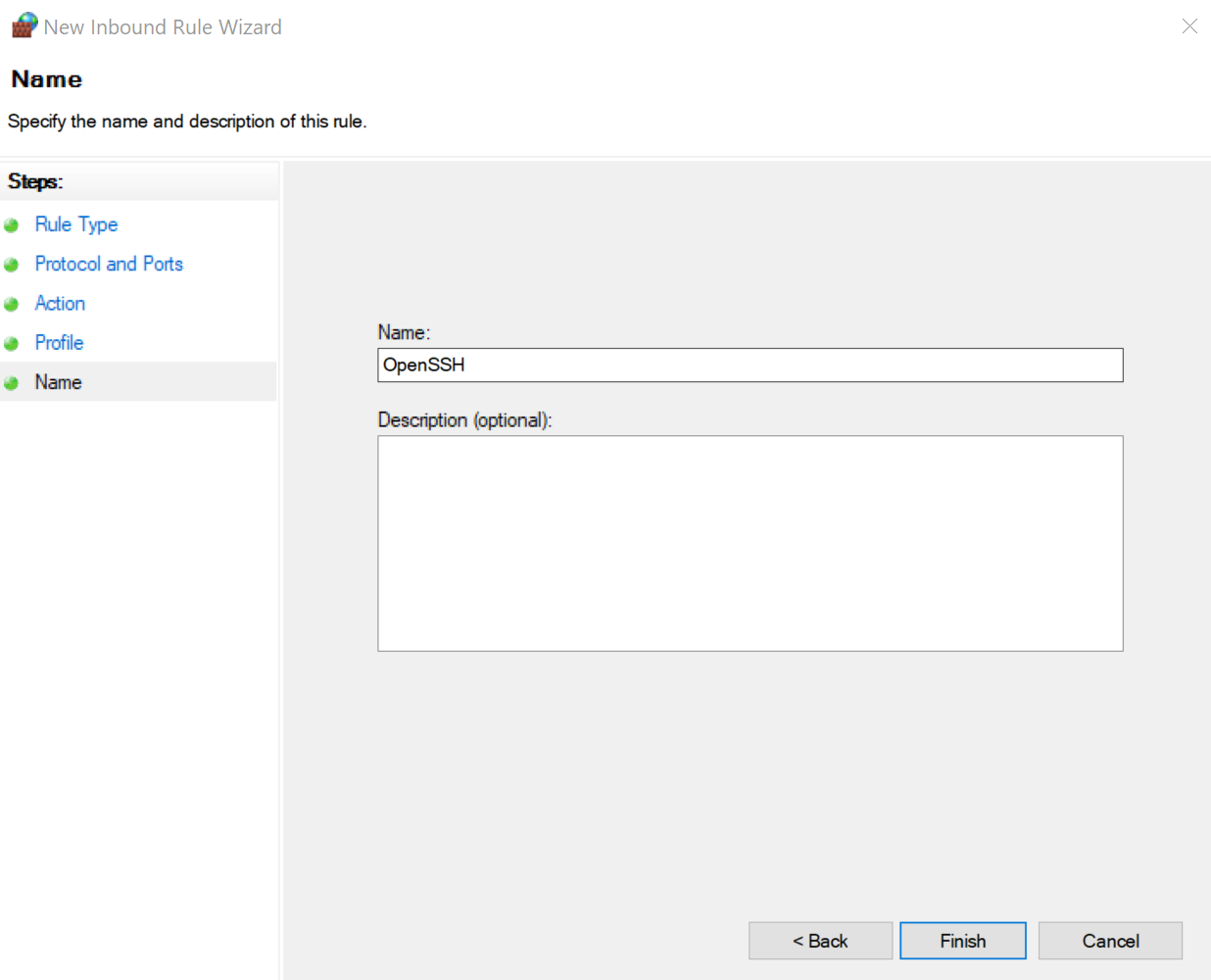
Step 4: Establish an SFTP Connection¶
You need an SFTP client to connect to an SFTP server. Discover with us the steps to follow in FileZilla. But don’t forget: you can also use, for example, WinSCP Or Swish. Swish has the advantage of being directly integrated into Windows Explorer as an extension. To configure the SFTP client, you must provide the following information:
- Connection type (SFTP)
- IP Address/Hostname
- username
- Password
- Port (usually port 22)
Once you have finished typing, connect to the SFTP server. In this example, your local computer is on the left. On the right you can view the folder structure of the server.
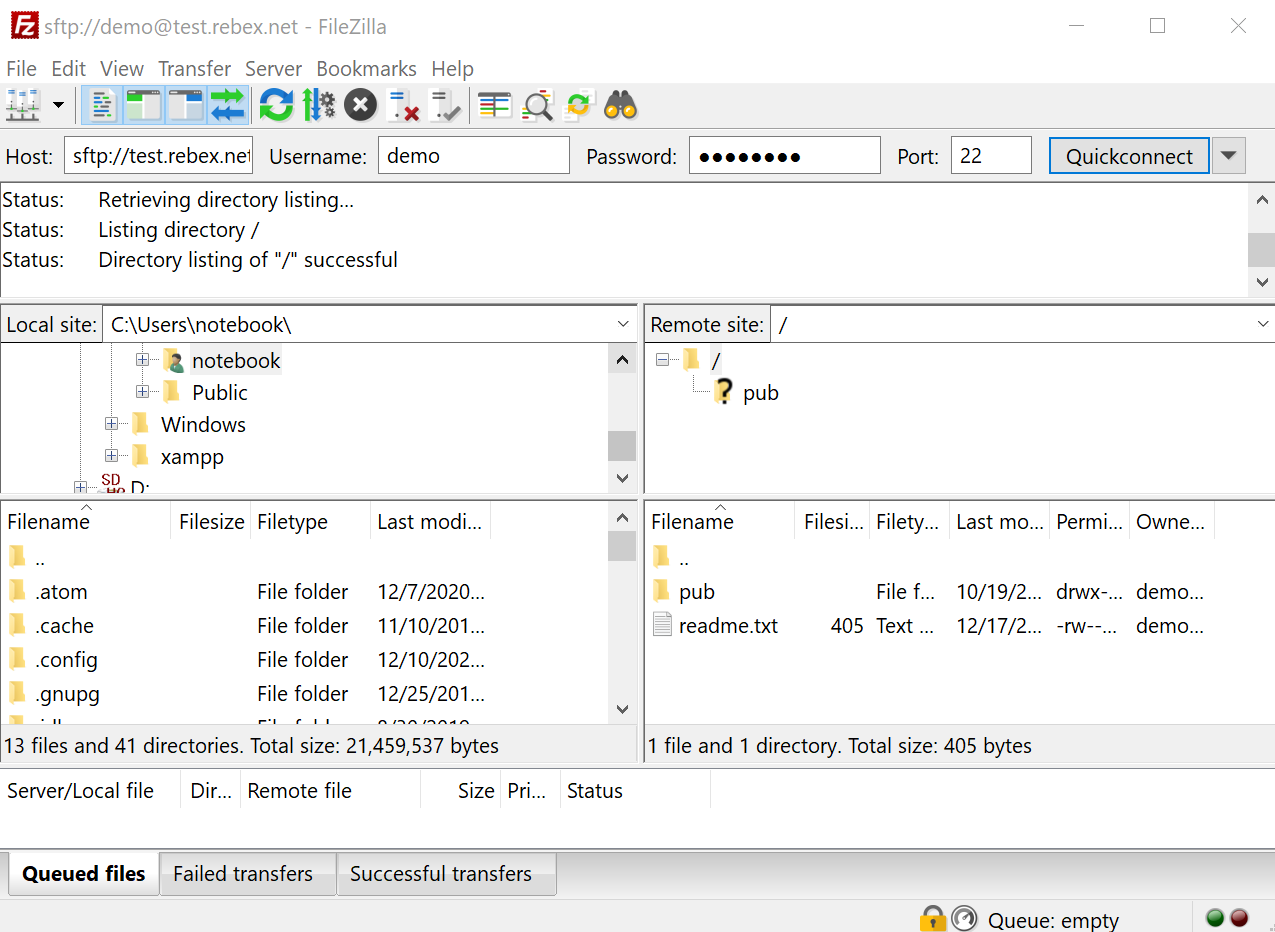
Step 5: Upload Files to SFTP Server on Windows¶
To upload a file to the SFTP server, drag it into the file folder on the right or select “ Upload » by right-clicking.
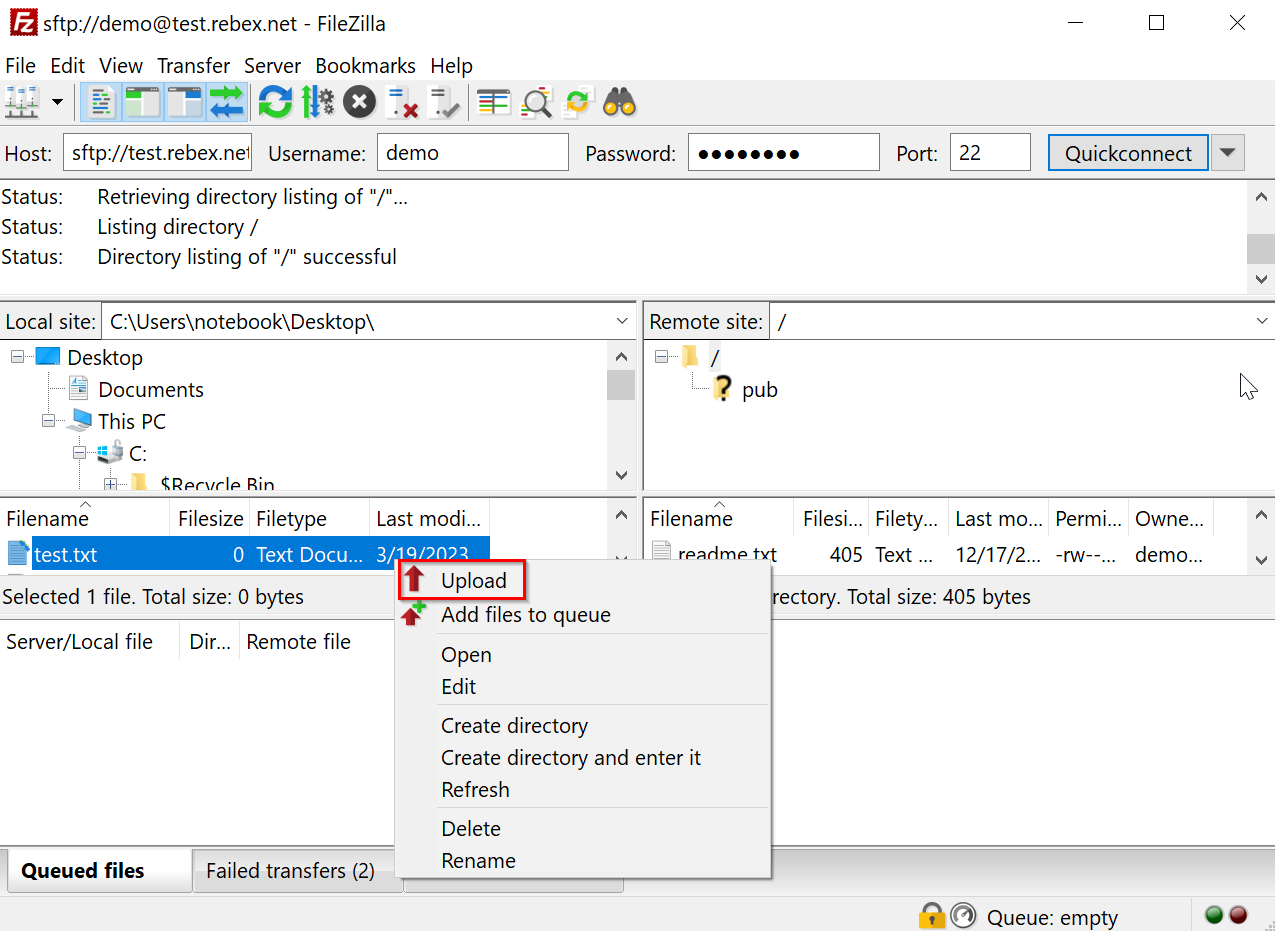
Do you prefer to use Linux? Discover our guide and its step-by-step instructions and configure your SFTP server under Ubuntu.




